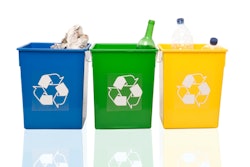
A marketing claim placed on a product package is more believable to shoppers than one made in an advertisement, says new research by the University of Miami School of Business Administration. The research, published in the July 2016 issue of the Journal of Consumer Psychology, is the first to demonstrate that consumers respond differently to these two promotional mediums because packages are perceived as physically closer to the product and therefore, more trustworthy.
According to the research, consumers perceive product packages, and thus the claims they offer, as more trustworthy and less manipulative than ads. Thus consumers are more likely to believe what the product package claims and purchase it.
“Knowing how believable product information is in various mediums can help marketers to decide where to allocate their resources when promoting a product,” says researcher Claudia Townsend, Assistant Professor of Marketing at the University of Miami School of Business Administration. “We believe our findings are relevant to an array of marketing media beyond packages and ads. For instance, a claim in a pop-up ad or web banner may also be more believable if there is something like easy click-through to the company’s website emphasizing its proximity to the product.”
Methodology
Regardless of context, the study finds that placing positive product information closer to the product increases the information’s believability. In three studies, the researchers showed participants product information. All that varied was whether the material was presented on a package or an ad, or in the case of the two online studies, whether the surrounding imagery showed the message to be in the context of a package or ad. The researchers also varied whether the actual product was presented close to the marketing message or not. They found that consumers believe packages more than ads precisely because they perceive packages as physically closer to the product. So, by placing an ad close to the product it represents, the ad then becomes as believable as a package.

























